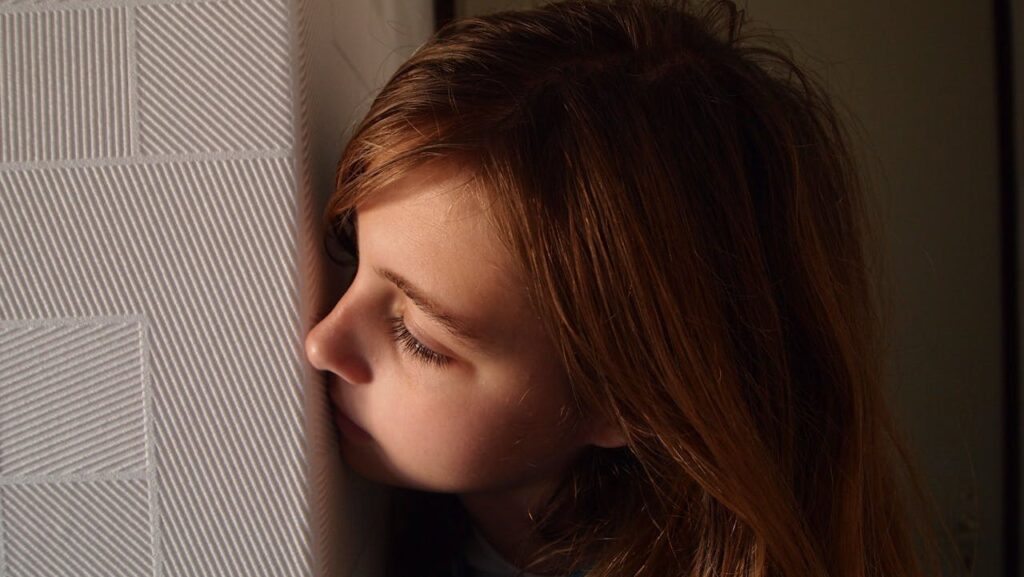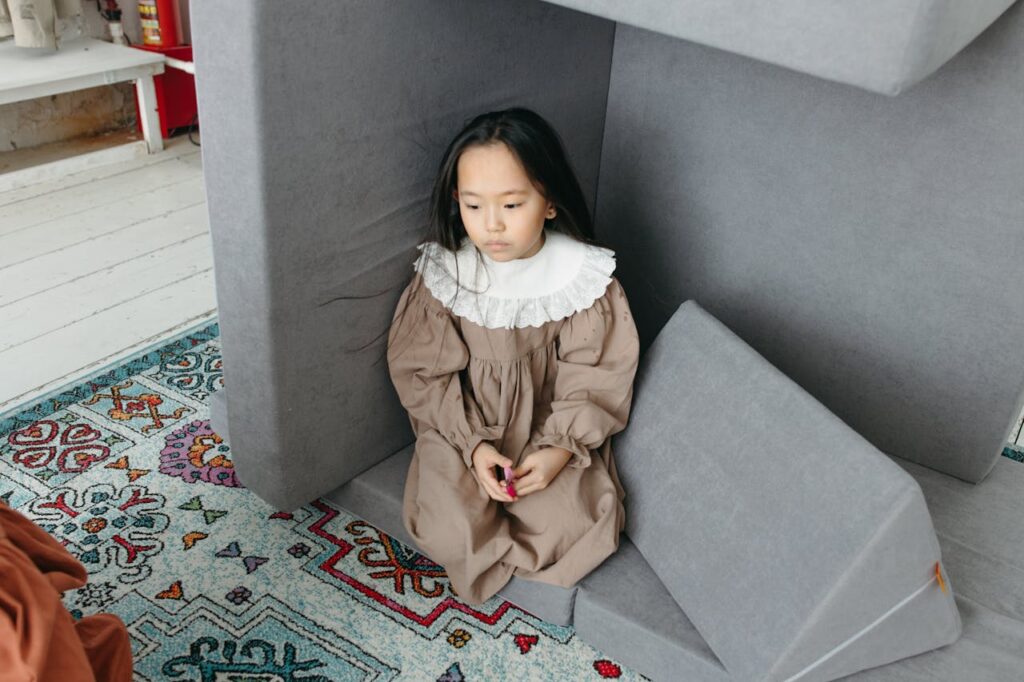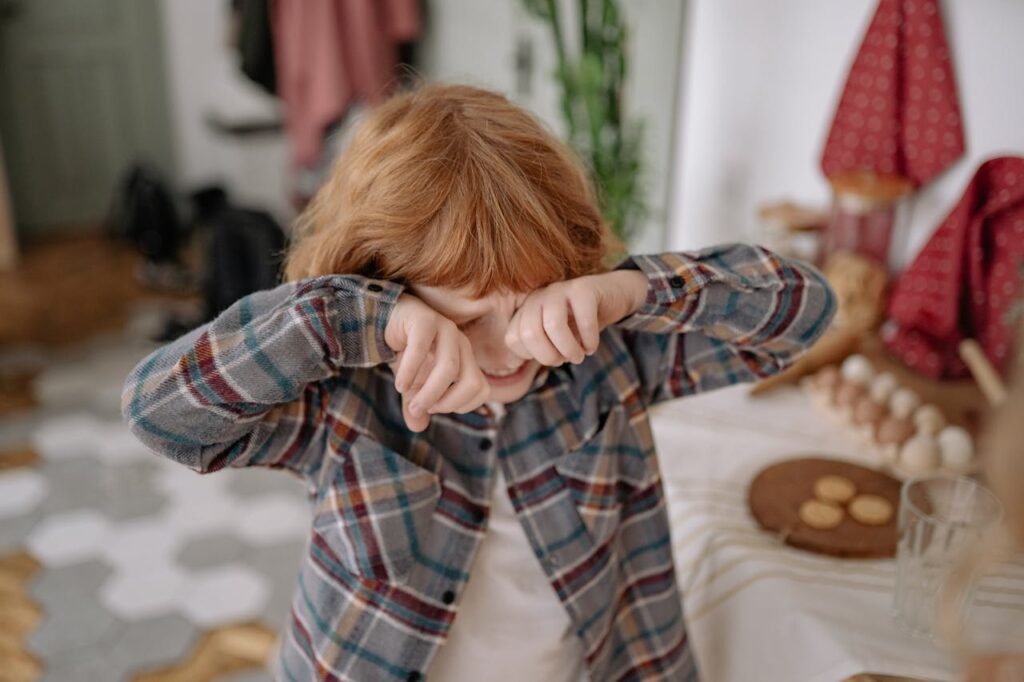Since the 1950s, studies and experts have supported the idea of time-out. Time outs in a corner, in a chair, or alone in the child’s room have been considered a non-aggressive way to manage child misbehavior and minimize instances of acting out. However, recently there has been growing concern that time-outs can be harmful to a child’s development, emotional regulation, and sense of security.
The fact is that over 80% of the studies supporting time-outs rely on other positive parenting techniques to see the reported results such as positive reinforcement, encouragement, emotional coaching, and very brief time-out durations. While a cool-down period is important to deal with tantrums, the implementation of time-outs rarely reflects the comprehensive methods used in these clinical studies.
In practice, time-outs are used for unrelated behaviors, extend too long, and create isolation that can be harmful to children. These lead to emotional distress and an errosion of trust rather than nurturing a child to seek better behavior.
What Is a Time Out Corner?
At the core of the time-out parenting technique is the time out corner. This is a specific place the child must sit during their time out. The intention is to separate the child from the circumstances of their misbehavior. It removes them from toys and entertainment, the mess they have been making, or the sibling they were fighting with.
The purpose is to use timeouts to discipline children who are having a hard time and make them feel that their behavior was wrong.
Common Practices
Parents typically use a time out corner to stop their child in the middle of unwanted behaviors. Two-year-olds and older may need to be separated from an activity or behavior before they stop misbehaving.
- Time out chair: A chair the child must sit in quietly and not leave during their time out duration. A time out chair for toddlers can also be a place to practice staying in one place on purpose.
- Timed time out: A specific amount of time for each time out. This should be very short for young children, but some parents add time each time the child misbehaves – which is less efffective than it might feel.
- Quiet place: The time out corner is supposed to create a space for quiet reflection and to regain calm.
As all parents know, the time out corner is as much for parental sanity as it is a form of discipline. That quiet time is supposed to let everyone regain their composure before the behavior is further addressed.

Credits: Pexels
Are Time Outs Effective?
While time outs may appear effective in the short term, they prove to be completely inefficient in the long run. The time outs recommended by professionals have very spcific rules more in line with a “time in” which we will discuss further on. Without following the additional parenting steps, the side effects of an isolating time out policy can result in side effects that are not worth the apparent temporary benefit.
Because of the drastic difference in how caregivers implement this form of discipline, the parenting strategy of time outs has become highly controversial.
Short-Term vs. Long-Term Effects
In the short term, a time out may cause a child to stop the unwanted behavior. It may look like time outs work. However, there are too many wrong ways to implement time out that result in young children feeling isolation and rejection. They are taught that it is unsafe to express their emotions or act upset because they will be shut away from parents and denied the opportunity to do things that make them feel better.
Preschoolers care deeply about parental connection and may stop bad behavior because they are afraid it will remove parental love. Time outs can cause lower self-esteem and teach appropriate behavior through fear instead of a desire to do better.
Expert Opinions
Professor Mark Dadds reports that time outs stoped being trusted because they were used incorrectly – not in alignment with the research supporting the method. “It was never designed to include isolating the child or withdrawing love or attachment. It is meant to be a very mild form of behaviour management, he said.”
“The severe punishment and social isolation that is commonly done in the name of time-outs” is harmful, says Dr. Daniel Siegel.
Aletha Solter, Ph.D. writes “Children under the age of seven simply do not have the capability to process words in the same way that adults do. Concrete experience and perceptions of reality impact more strongly than language. Being isolated and ignored is interpreted as “Nobody wants to be with me right now. Therefore I must be bad and unlovable,” and no loving words, however well intended, can override this feeling of rejection.”
5 Reasons It’s Harmful for Kids
The time out corner is bad for children for five important reasons.
1. Erodes Trust and Security
Time outs, from sitting in the time out chair to isolation in their room, can erode a child’s trust in their parents and sense of security. Time out for a toddler can be devastating, especially if it is far away or out of sight of their parent. Young children need the security of parental love and time out instills fear, isolation, and a sense of rejection rather than teaching the lesson parents want to teach.
2. Causes Emotional Distress
Time outs can also cause children significant emotional distress. Most parents believe that time out for kids should align with a number of minutes for their year of age. The idea is to instill good behavior, but instead they may be damaging their child’s mental health. Time out implemented without positive reinforcement can lead to feelings of abandonment and anxiety for the child. If this is a common theme throughout childhood, it can lead to long-term self esteem problems and mental health concerns.
3. Stifles Emotional Development
Children must be able to express their emotions and then learn to control them with guidance, not punishment. When time out is used every time a child acts up or gets upset, they will get the message that their emotions are unacceptable. They may feel that they are being put out of sight for having emotions, that their emotions make them unlovable, or they will learn unhealthy emotional management if isolated every time they express strong emotions in front of a parent.
This can severely stifle emotional development and prevent a child from learning how to express and manage their emotions effectively. This can help you understand why are time outs not developmentally appropriate and can harm child development.
4. Encourages Negative Behavior
Sending children to their room can even encourage negative behavior for two reasons. First, leaving a child alone can result in acting out while they are alone. Yelling, hitting the door, and tantruming alone are far from healthy and are signs of acting out without emotional guidance. Time outs also fail to address the root cause of most misbehaviors.
While some behavior problems are benefitted by an opportunity to cool down, being isolated will not help a child deal with other problems causing misbehavior. In this way, time outs are going the same way as spanking or physical pain as the parenting community realizes that punishment is not the same as behavior management.
5. Creates Power Struggles
Lastly, time outs often lead to power struggles between parents and children. What could be a learning experience becomes a battle of wills. Instead of addressing misbehavior as a request for help, it becomes a matter of enforcing and resisting punishment. This will naturally make discipline more challenging and can create a rift between parents and children when it comes to truly addressing problems.

Credits: Pexels
How Can the Time-Out Corner Be Harmful to Children’s Development?
The original time out supported by research requires a rigorous parental strategy that involves only using time outs for specific situations, very short time outs (around 3 minutes for children under 7), and loving affection on both sides of the cool-down period. The time out corner, however, often becomes a fallback strategy for parents who need a break themselves.
Used outside of the clinical parenting strategy, time outs can absolutly become harmful to a child’s development. The time out corner becomes a universal punishment used any time the child experiences stress and often for much longer than necessary.
Hindering Emotional Growth
If a child is sent to the time out corner every time they express strong emotions, the natural consequence is a stunting of their emotional growth. They are also facing punishment instead of being guided through how to identify and deal with their emotions. This can lead to poor emotional coping skills in children. Time out for toddlers should be very short, as they don’t have a long emotional cycle, but too long alone can make a child unsure about their emotions or even why they are being punished.
Potential Behavioral Issues
Frequent use of time outs can errode even the apparent short term benefits. Children who (perhaps rightly) feel that they are being punished for the wrong things will rebel against time out. This can lead to negative behavior issues that are often a cry for parents to help them deal with their problems instead of sending them away.
If time out and tantrums are the only structure they have, this can build a foundation of long-term behavior issues.
👉 Do you consider yourself a strict parent? Read the article “Parent Yelling at Child: Why It Doesn’t Work” to find out why this type of parenting may be harmful.
At What Age Do Time-Outs Start To Become Ineffective?
Time outs are not reccomended for older children because the child will no longer understand the intended lesson. As children approach school age, ineffective time outs can harm the parent-child relationship when conversation would be more effective as a way to address misbehavior.
It is important to find more affective and developmentally appropriate discipline methods as your child grows up.
Alternatives to Using a Time-Out Corner for Disciplining Children
The good news is that the time out controversy is not removing a tool from your parenting tool kit. There are other positive parenting methods to use instead of time out that more effectively address root problems, help children understand their behavior, and provide guidance instead of punishment.
Now that we’ve explored why the time out corner is no longer recommended in child rearing, let’s look at healthier and more effective alternatives for guiding your child’s behavior.
Positive Reinforcement
Positive reinforcement involves encouraging your child and congratulating them when they display desired behavior. This shows how you want them to behave and teaches that good things come from good behavior without the need of a negative example and punishment to learn the right way.
- “You’re being so helpful in cleaning up today. That’s wonderful!”
- “I love how nice you are being to your little sister. You’re such a good older sibling, I can see how much you love her.”
- “You behaved so well in the car today. Do you want to pick what we have for supper?”
- “I saw you working hard to keep your hands to yourself. Good job!”
Time-In Technique
A time-in combines the classic cool-down period with attention and positive reinforcement. Instead of isolating your child, remove them from their activity or misvehavior and sit with them. Help your child calm down. Talk about how they feel and offer guidance. Or ask them to sit quietly with you instead of sitting quietly alone.
Time-ins bring back the original intent and positive parenting methods of the time out. Time outs were always supposed to be a brief period with parent nearby and hugs available before and after. Time-ins reinforce the need for parents to be present, loving, and supportive when a child needs to cool down from intense emotions, and the importance of offering emotional guidance instead of isolation.
Natural Consequences
Natural consequences occur when you allow your child to experience the (safe) consequences of their actions. For example, if your toddler throws their breakfast, make them wait until lunch. If they get messy when you tell them not to, make them endure the sticky or itchy results before they can wash up.
Natural consequences are learning opportunities. You can talk with your child about what they are experiencing and why. Allow them to shorten the duration of their consequence if they show understanding and a desire not to do it again.
Child: “My hands are sticky!”
Parent: “I told you not to take apart your sandwich.”
Child: “I don’t like being sticky!”
Parent: “Neither do I. That’s why I eat my sandwich with the bread on the outside”
Child: “Oh yeah. That might be better”
Parent: “Then let’s get washed up”

Credits: Pexels
Communication and Problem-Solving Skills
Talking out a problem and teaching problem-solving skills is increasingly effective as children grow older. Some toddlers like to talk out their problems, and by elementary school, most children would rather problem-solve than endure arbitrary punishment.
Communication can help your children learn to identify and deal with strong emotions. It can help them learn what to do if they make a mistake, like breaking something or making a mess. Conversation helps you get to the root of a behavior problem and gives children an opportunity to ask for help or guidance when they need it, as well as learning to solve their problems on their own.
Conclusion
Are time outs effective? According to the research, time outs are only effective when implemented as part of a positive parenting strategy. Instead of the time outs you knew as a kid (isolated for long periods of time), practice the time-in. Time-ins focus on the positive parenting aspect of this classic cool-down technique. Help your child learn to understand and cope with their emotions. Seek the real source of behavior problems instead of the tantrum. And if you need that important moment of parental cool down, do so nearby.
Let your child see you go through your breathing, centering, and self-calming ritual. Show them how it’s done and explain that we all need time to calm down sometimes. Time-ins foster connection and understanding. Old-fashioned time outs are just another form of outdated punishment that we’re learning can do harm. Now is the time to consider alternative methods for helping our children curb bad behaviors and learn good ones instead. This will help you build a positive and supportive environment for your child’s development.
You don’t know what more you can do to get your child to listen? We’ll equip you with expert techniques in our masterclass: ‘How to Get Kids to Listen? 5 Steps to Get What You Want Without Getting Angry or Giving In.’ Plus, Sophie, our AI parenting expert, is here to respond to all your parenting questions, anytime.
References
American Psychological Association. (2019, February 18). Resolution on physical discipline of children by parents [Press release]. https://www.apa.org/news/press/releases/2019/02/physical-discipline
Between freedom and fear: Children’s views on home alone. (n.d.). https://www.researchgate.net/publication/240591119_Between_Freedom_and_Fear_Children’s_Views_on_Home_Alone
Regalado, M., Sareen, H., Inkelas, M., Wissow, L. S., & Halfon, N. (2004). Parents’ discipline of young children: results from the National Survey of Early Childhood Health. Pediatrics, 113(6 Suppl), 1952–1958. https://doi.org/10.1542/peds.113.6.S1.1952
Smith, A. B. (2006). The State of Research on the Effects of Physical Punishment. Social Policy Journal of New Zealand, (27), 114–127.








